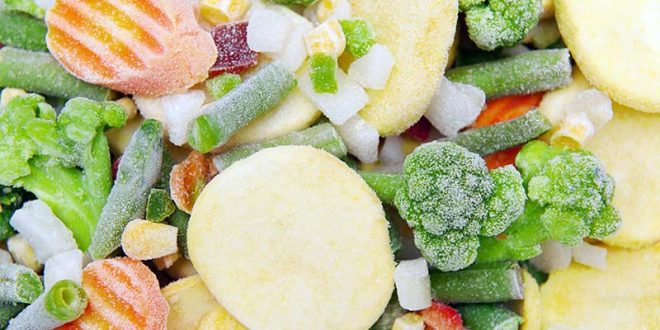For a range of homes and demographic groups, frozen veggies (and fruits) make it simple to improve produce intake and decrease food waste, according to a recent survey, cited by the American Frozen Food Institute (AFFI).
A specific examination of households that fit the requirements for the Supplemental Nutrition Assistance Program was also part of the survey (SNAP). According to eight out of ten SNAP-eligible study participants, frozen fruits and vegetables make it simpler to eat more produce, reduce food waste, and save money. These results show the significance of frozen food in federal feeding programs.
“As the food industry and policymakers explore ways to improve nutrition and reduce hunger across the country, frozen foods must be part of the solution. Shoppers recognize that frozen fruits and vegetables offer an easy and convenient way to further include produce into their diet, all while stretching their dollar further thanks to the reduced waste,” AFFI President and CEO Alison Bodor said.
In the same respect, more than 25% of consumers now buy more frozen veggies (and fruits) than they did three years ago and are aware of the many health benefits of doing so.
“Overall, penetration in the U.S. is high, with 94% of American households buying frozen fruits and vegetables,” the AFFI experts say.
The vast majority (86%) of the more than 1,500 consumers polled agreed that having frozen fruits and vegetables makes it simpler to eat more food. Due to the important characteristics of frozen, such as longer shelf life and the option to just prepare what you need, 83% of respondents said that frozen fruits and vegetables assist them to decrease food waste and save money. Furthermore, 76% of respondents concurred that frozen fruits and vegetables encourage people to consume produce that they might not know how to cook otherwise.
“The frozen food category offers a variety of solutions for today’s consumers, and frozen fruits and vegetables remain an important component. This survey confirms that shoppers are finding different applications and benefits as they integrate these products into their meals,” Bodor mentioned.
The sales of frozen fruits and vegetables in the U.S. reached USD7.1bn over the 52 weeks ending June 26, 2022, and product volume were 135,500 tons above pre-pandemic levels at 1,95m tons. The top products within the segment were plain vegetables, potatoes and onions, and fruit, with sales of USD2.9bn, USD2.3bn, and USD1.5bn, respectively.
Consumers incorporate frozen food in a variety of ways throughout meals. Frozen fruits and vegetables were most frequently used as sides to the main entrée (63% of all consumers indicated this usage), as ingredients in drinks and smoothies (50%), and as a garnish for pasta and rice dishes (44%).
Nearly all buyers also stated that they purchased both fresh and frozen produce, and when fresh produce was running low, they turned to frozen fruits and vegetables to tide them over until their next shopping trip. According to AFFI’s Power of Frozen 2021 market research, the majority of customers include both fresh and frozen produce in their meal planning. This information is consistent with their findings.
To better understand consumer opinions, shopping behaviors, and uses of frozen fruits and vegetables, the American Frozen Food Institute (AFFI) hired 210 Analytics to survey a wide range of homes based on the U.S. Census. According to a study titled “Frozen Fruits and Vegetables: Perceptions, Uses and Expectations among U.S. Consumers and SNAP-Eligible Households,” the common purchase and use of frozen produce contribute to rising fruit and vegetable intake.
A source: https://www.potatobusiness.com








